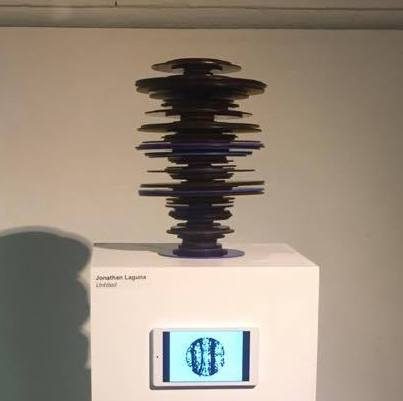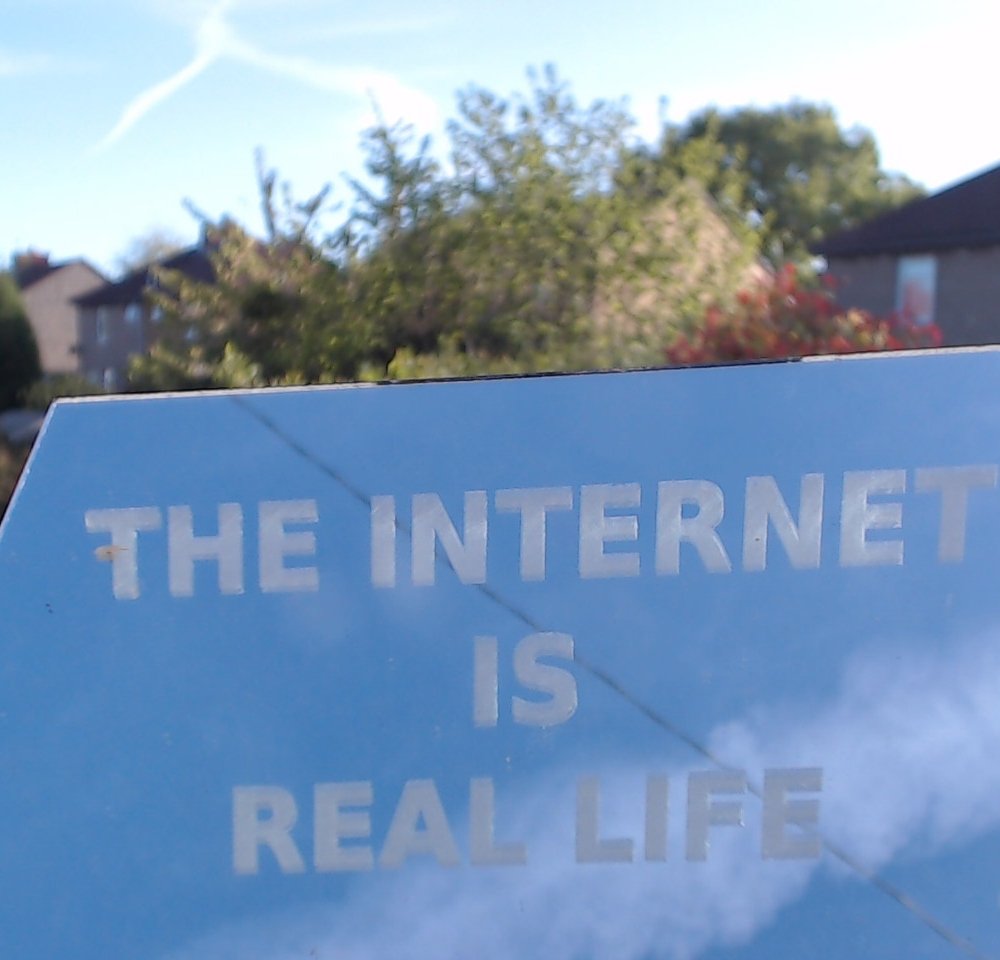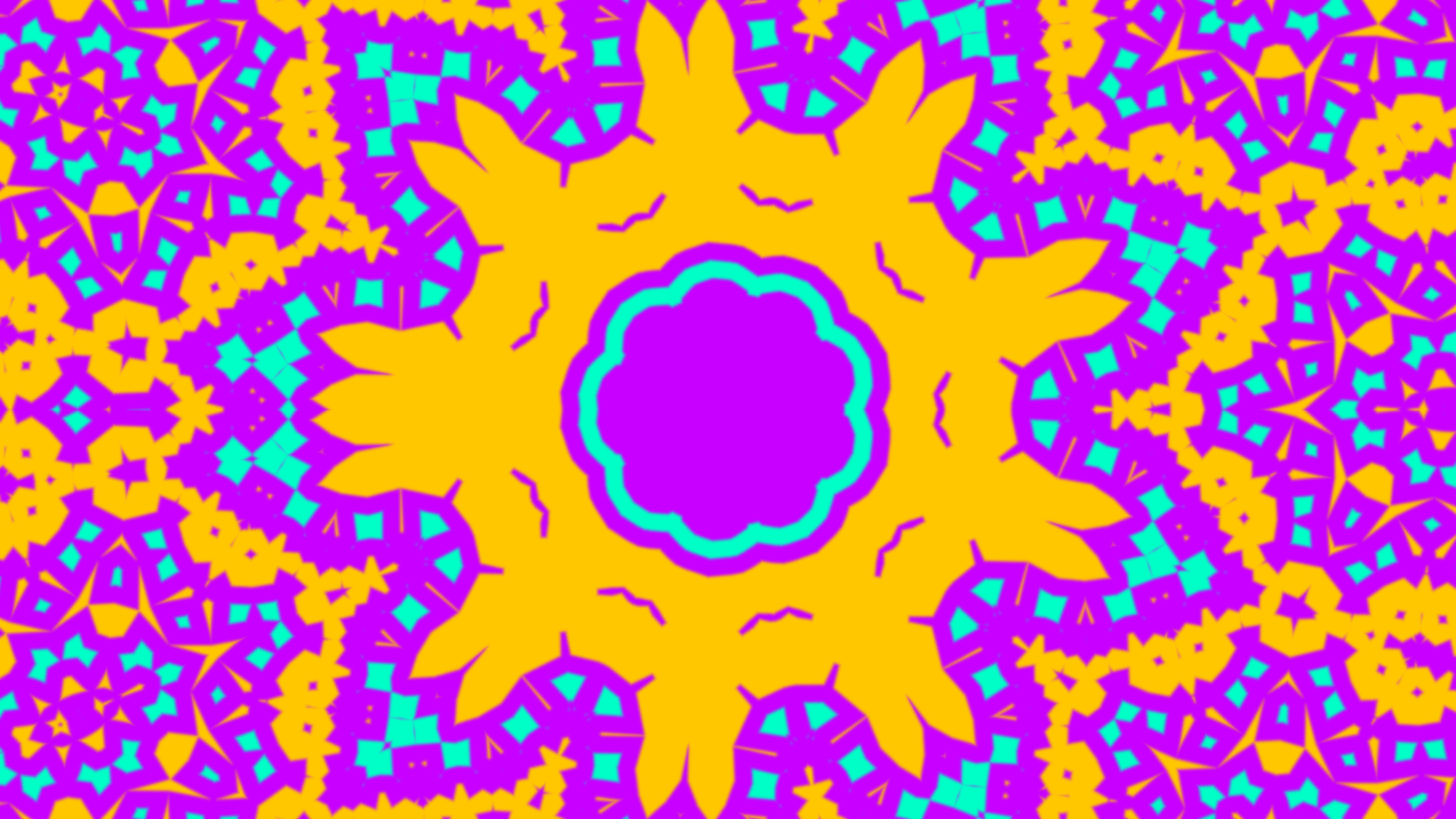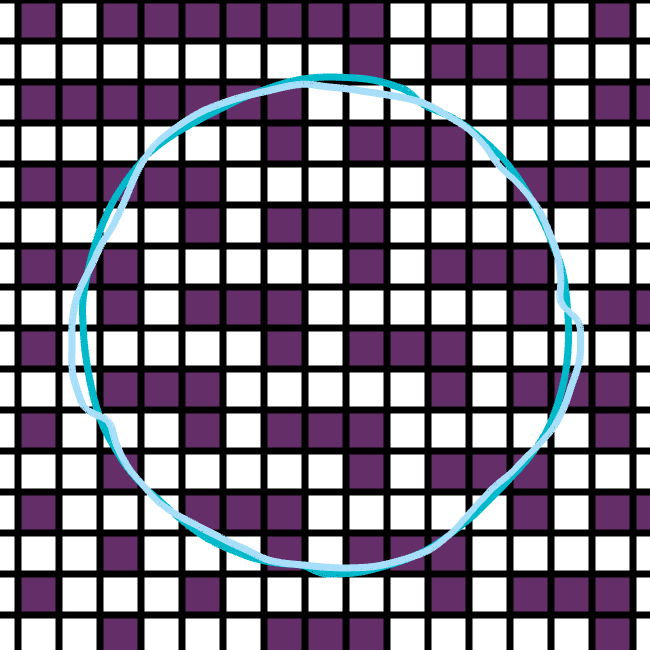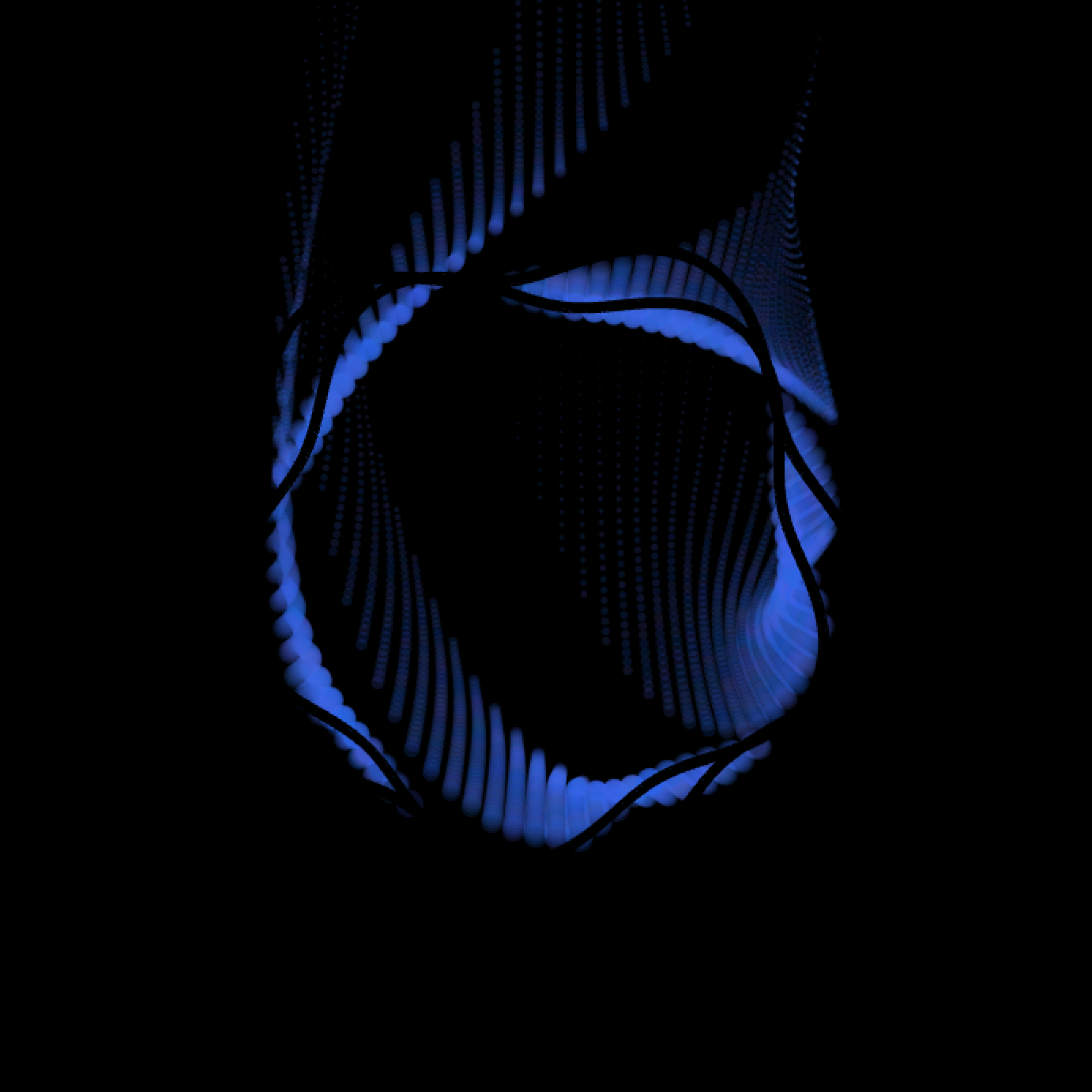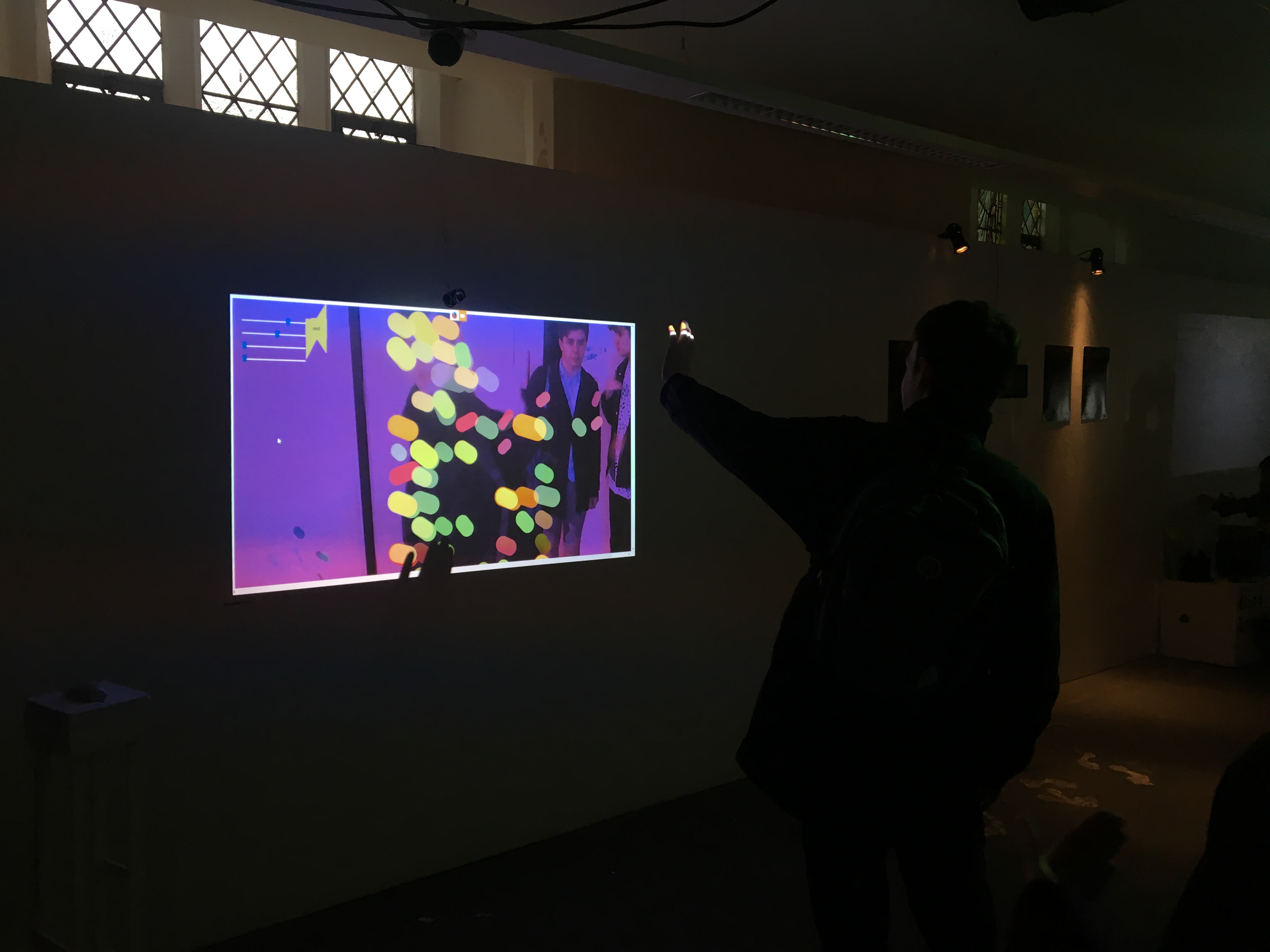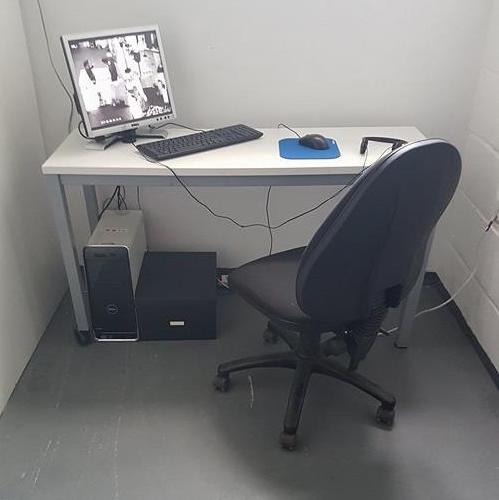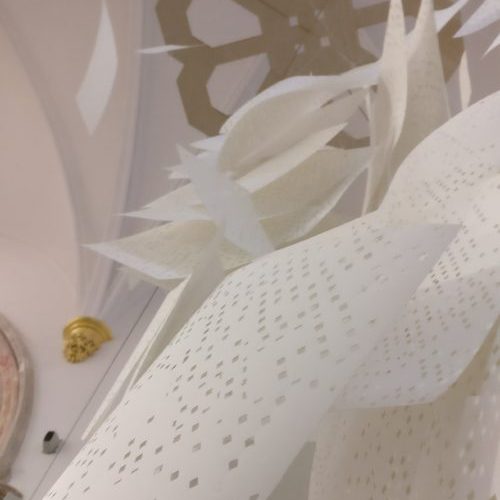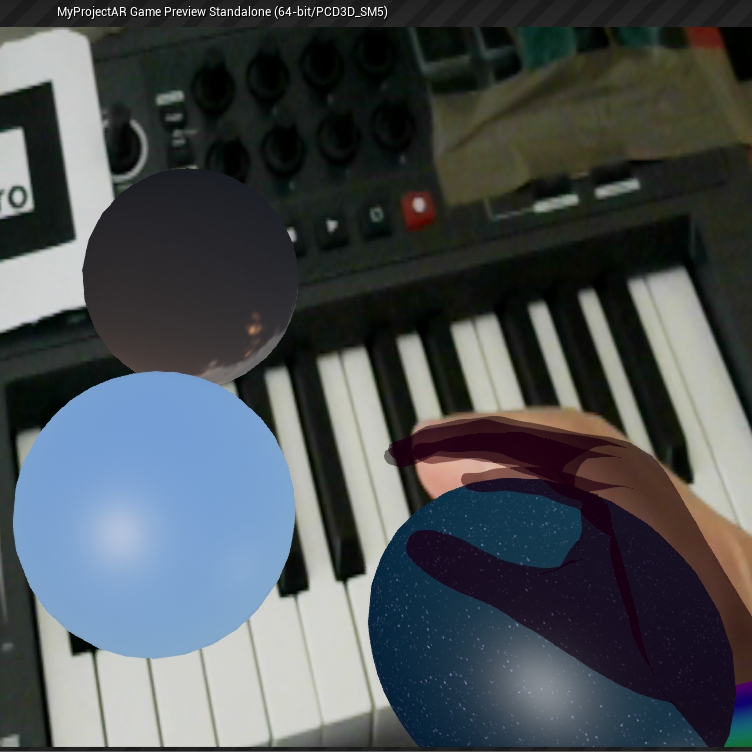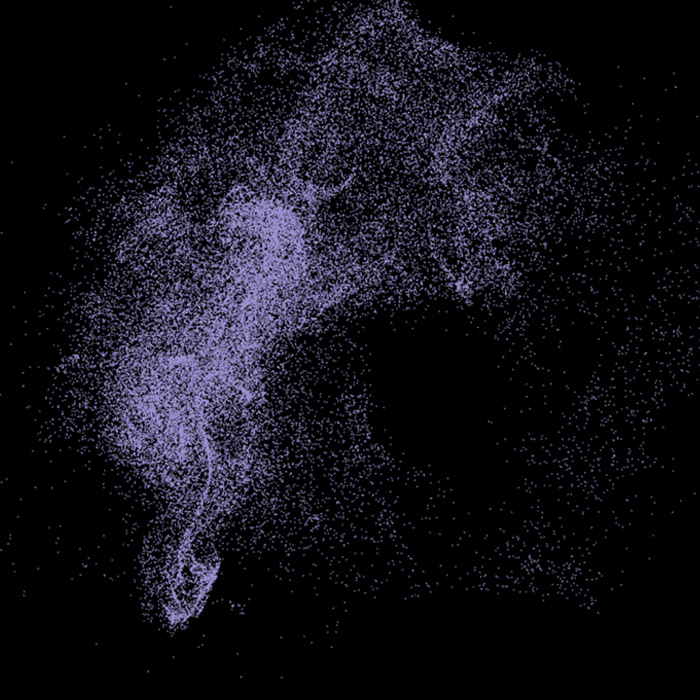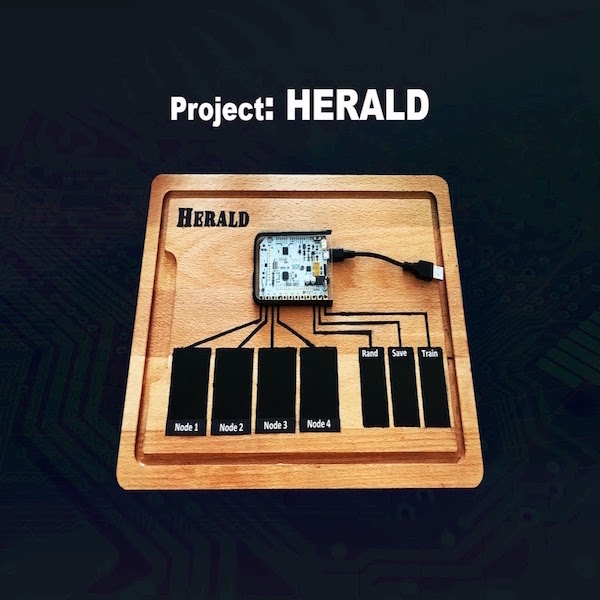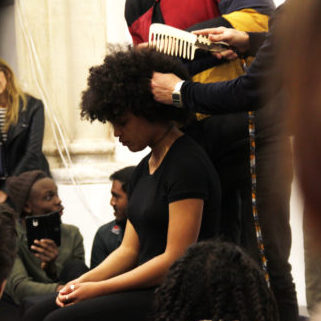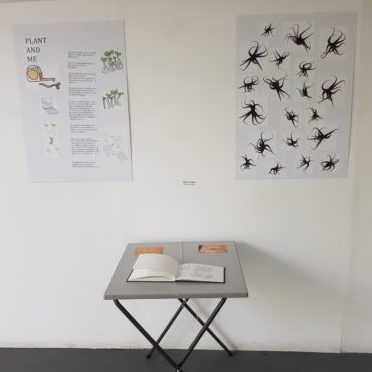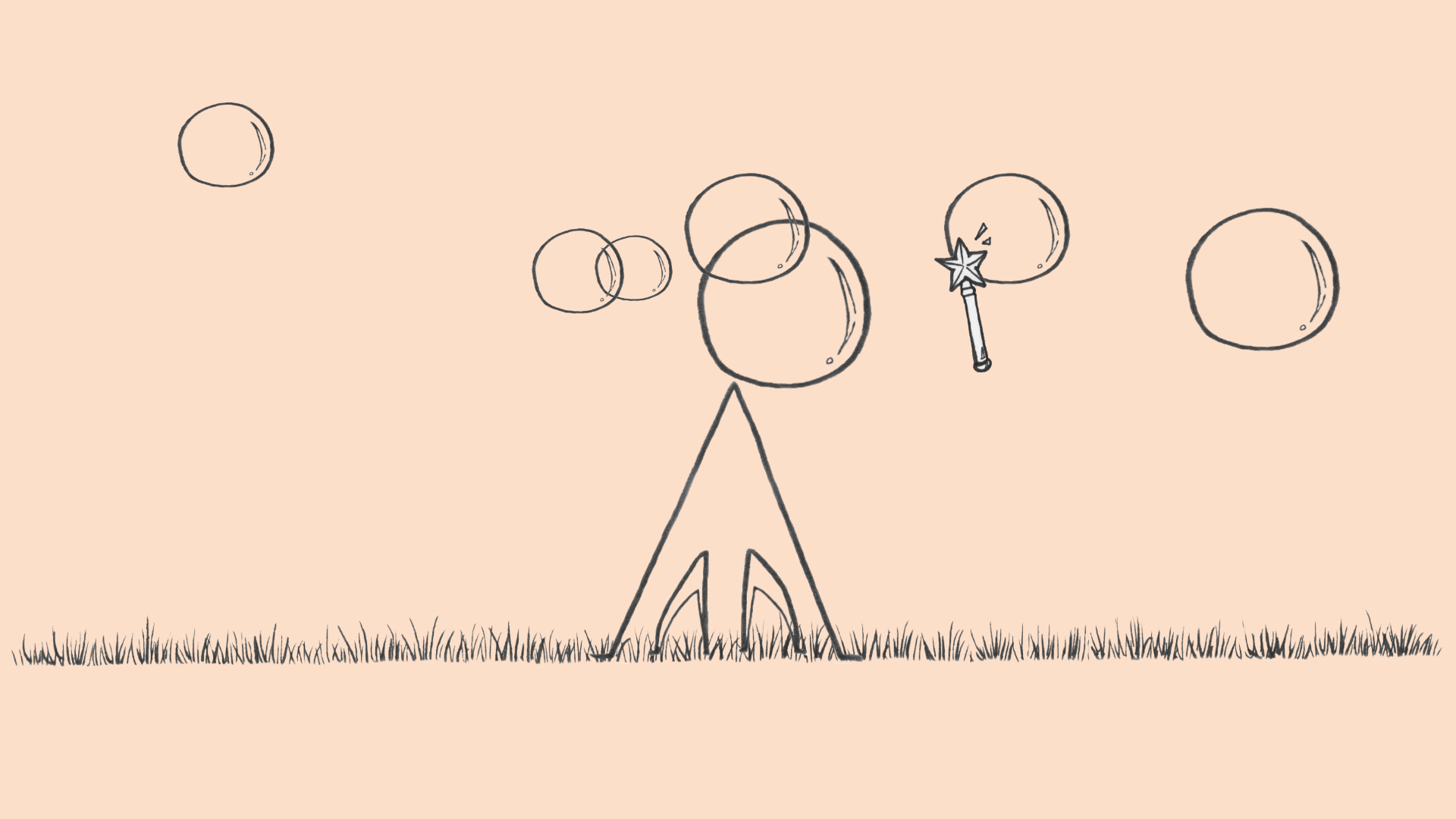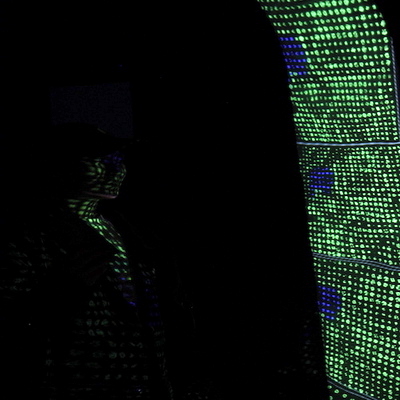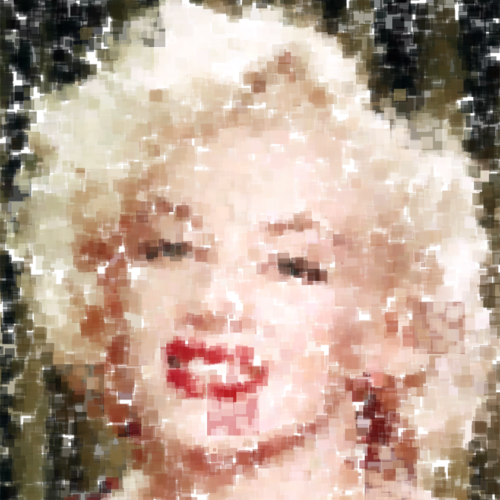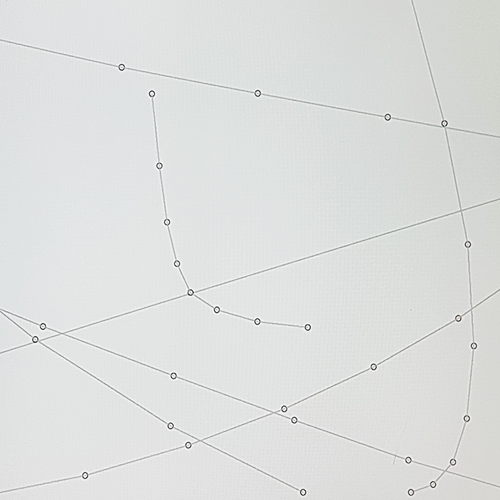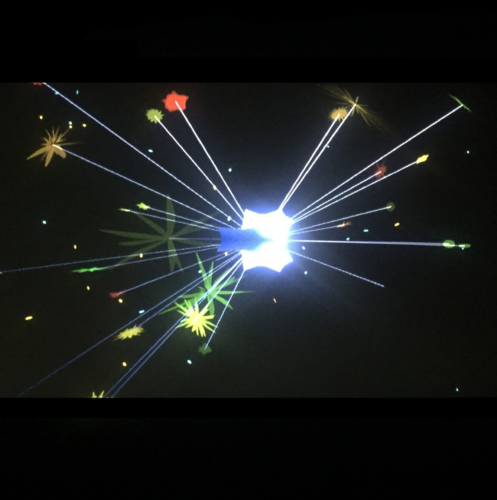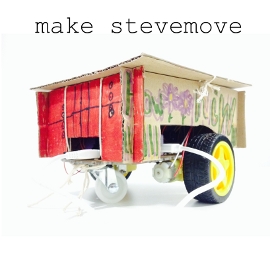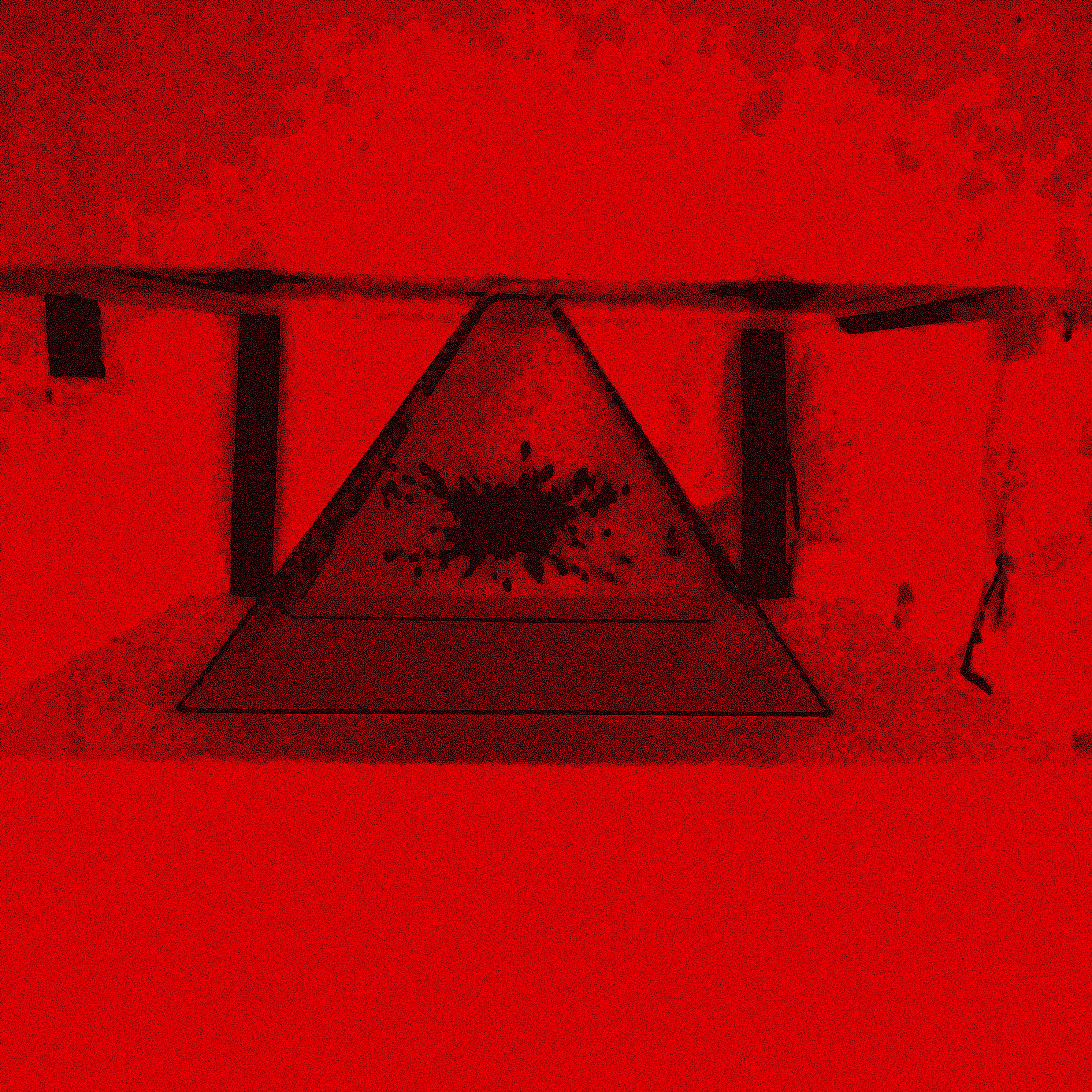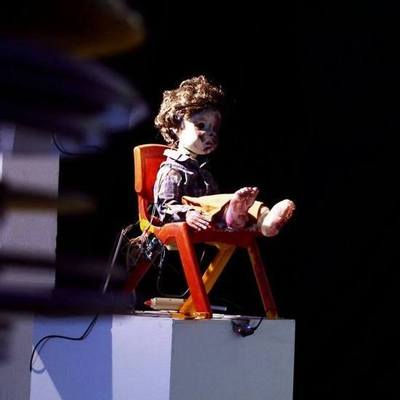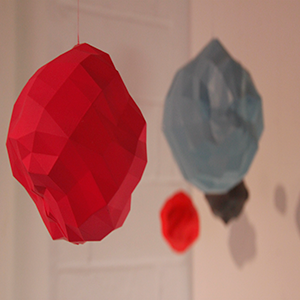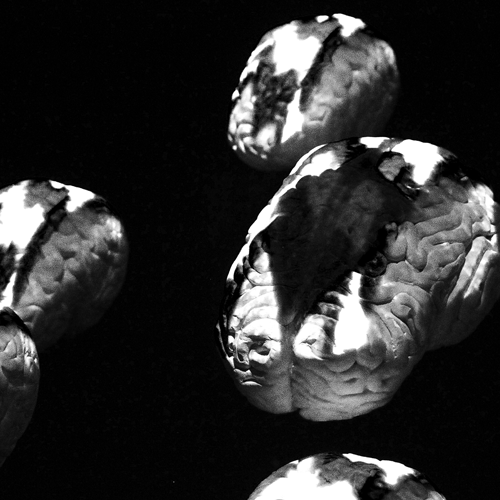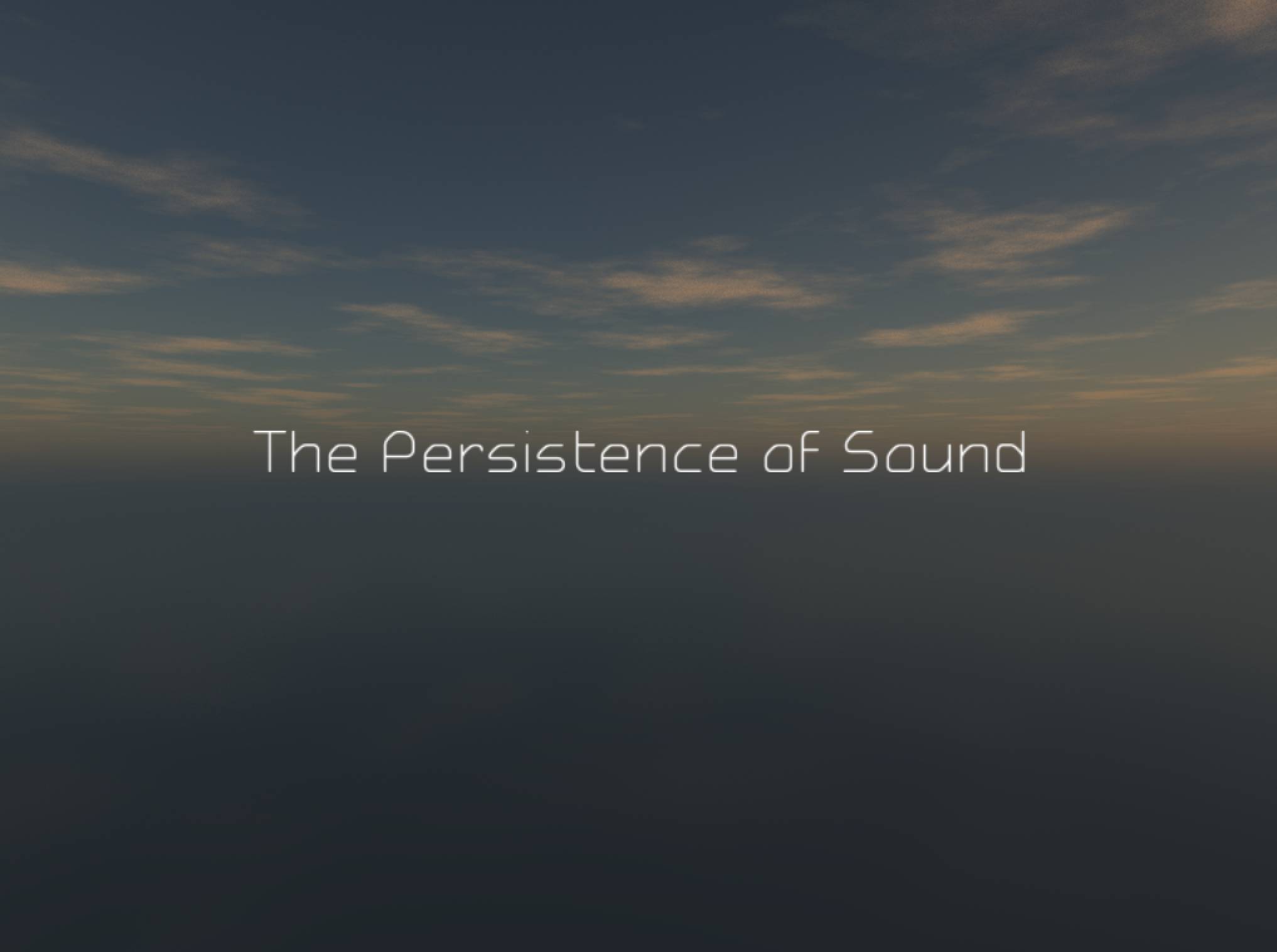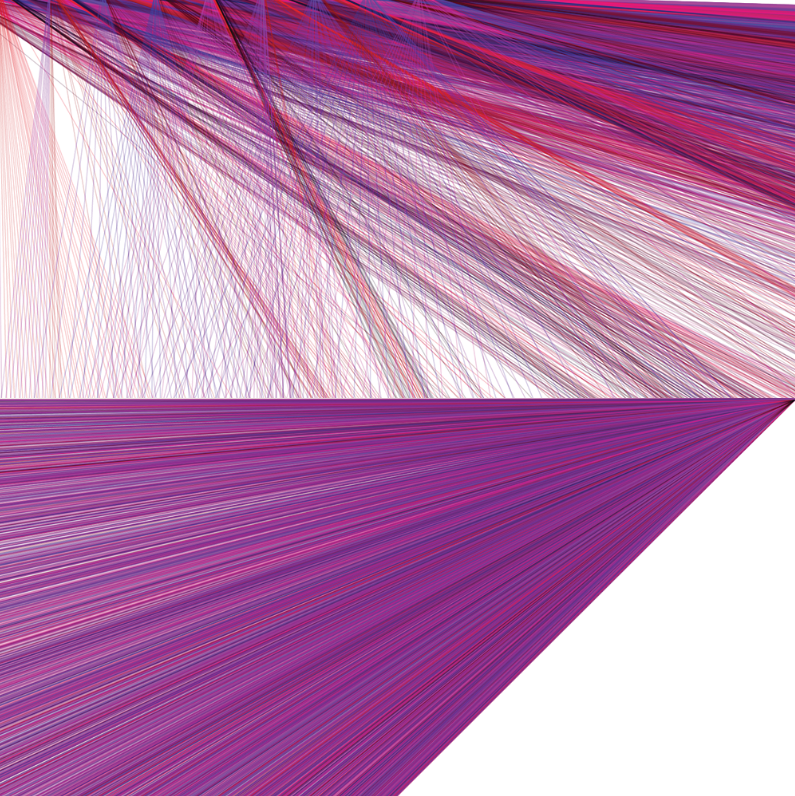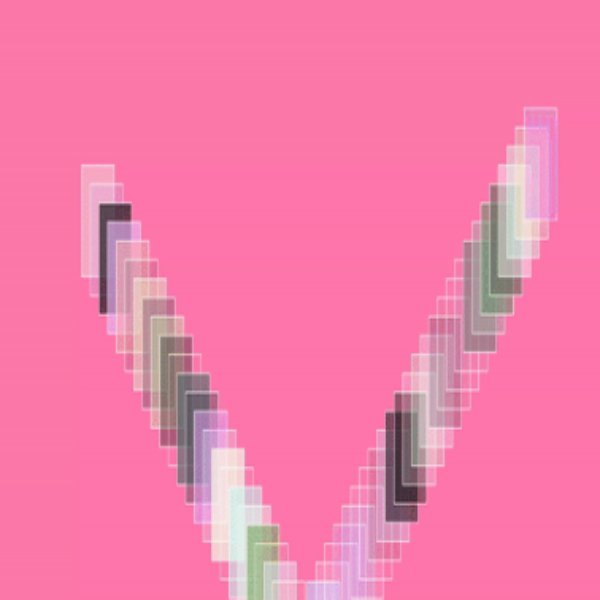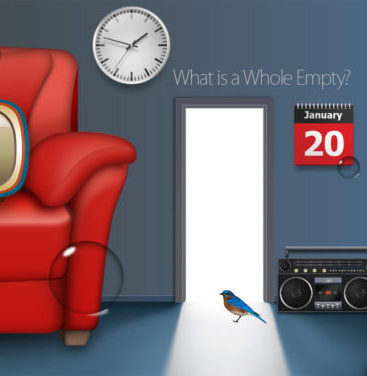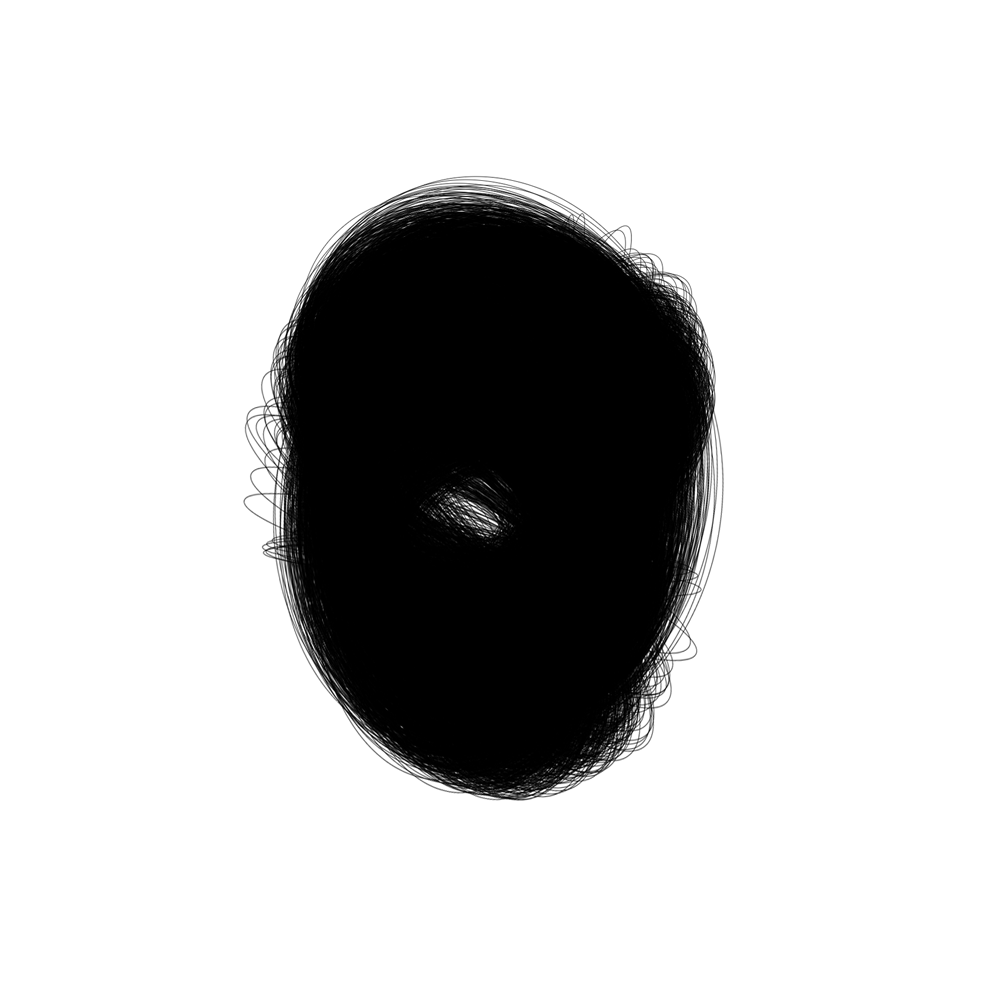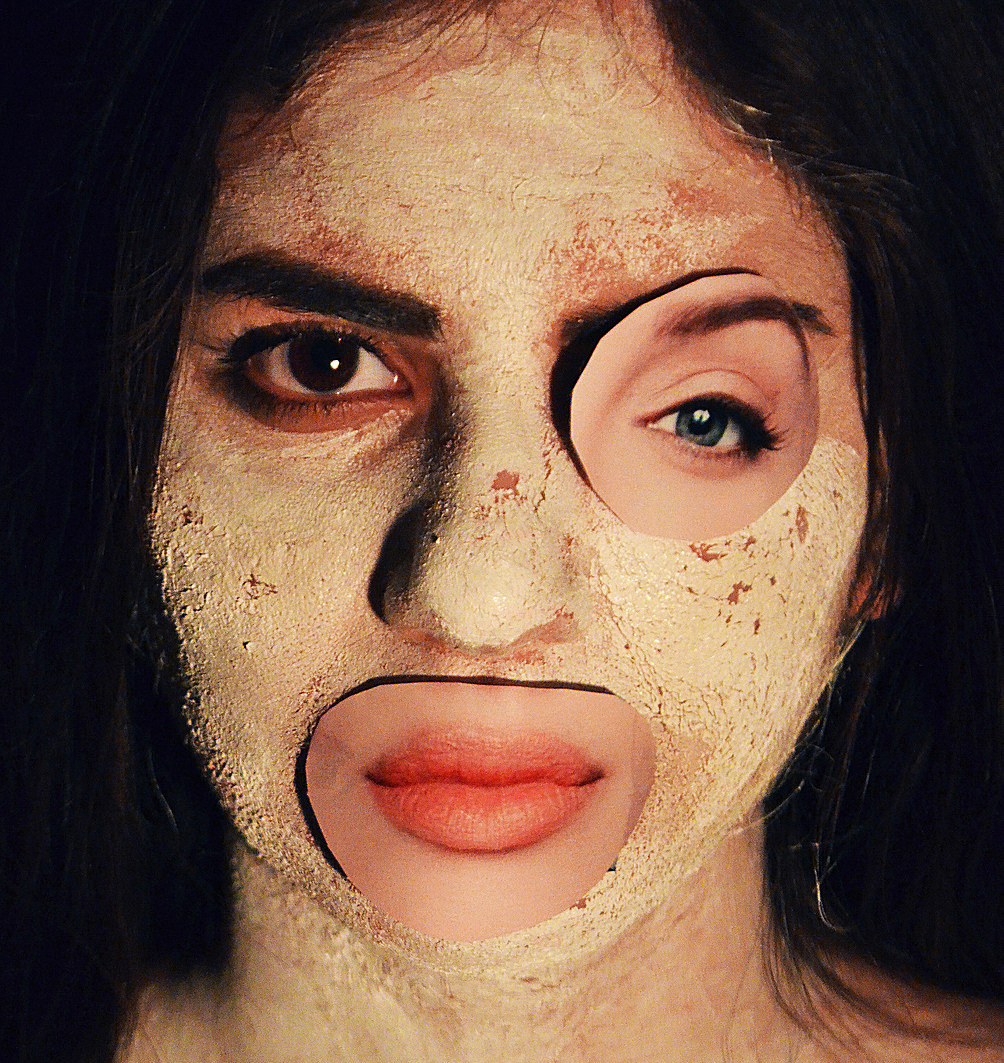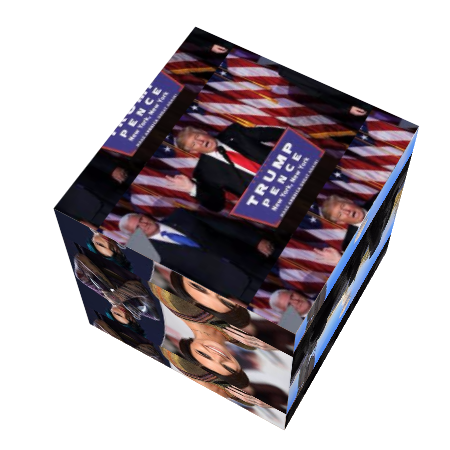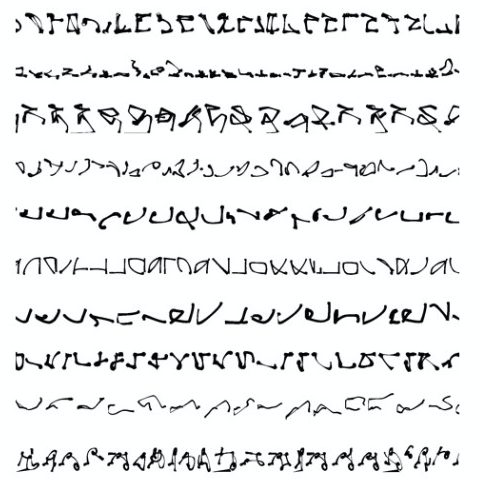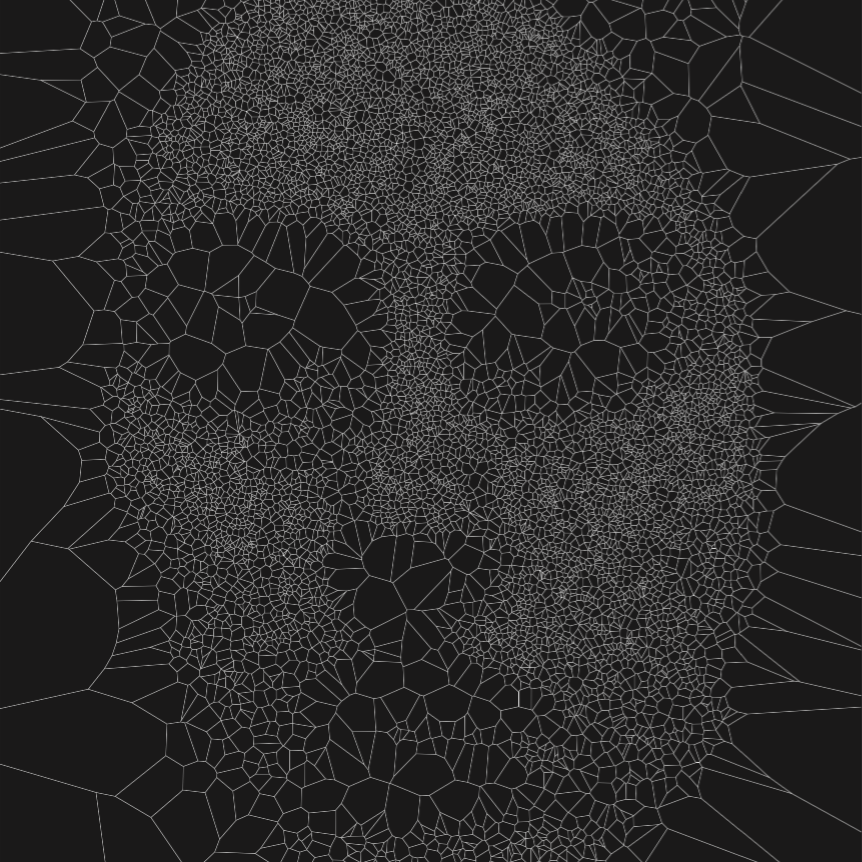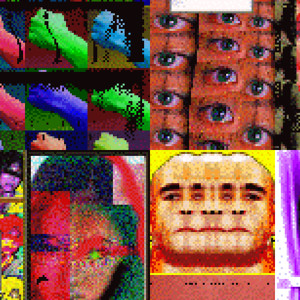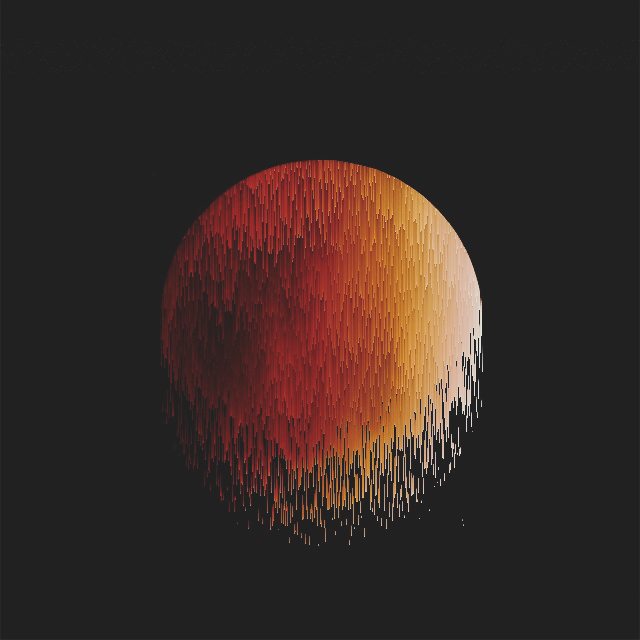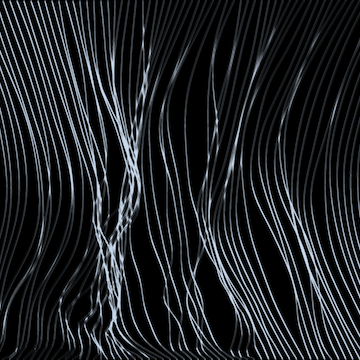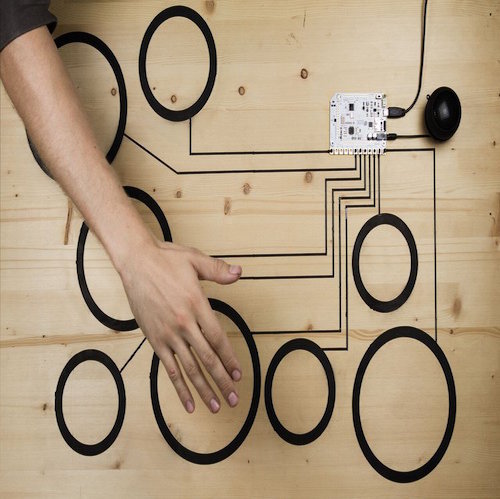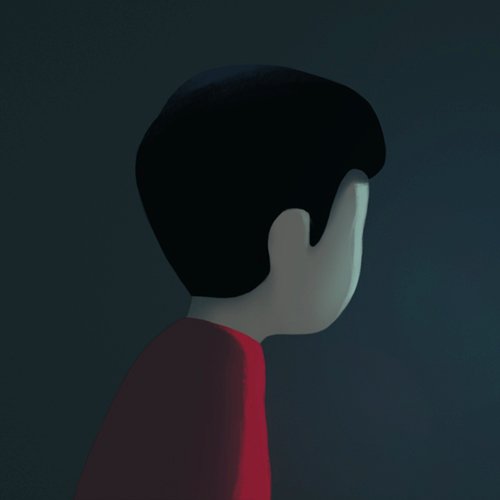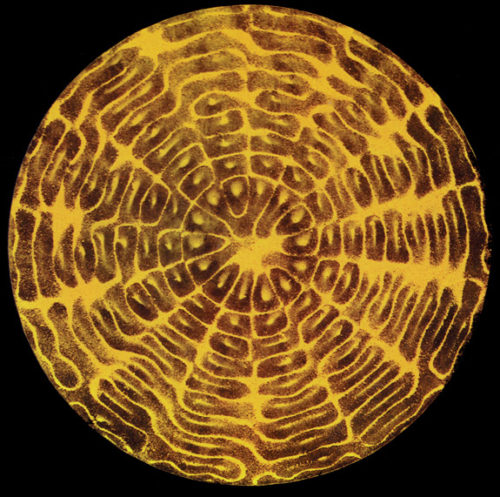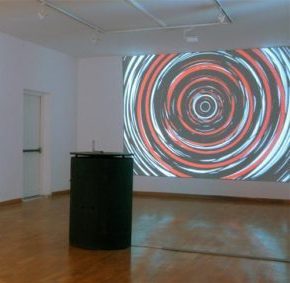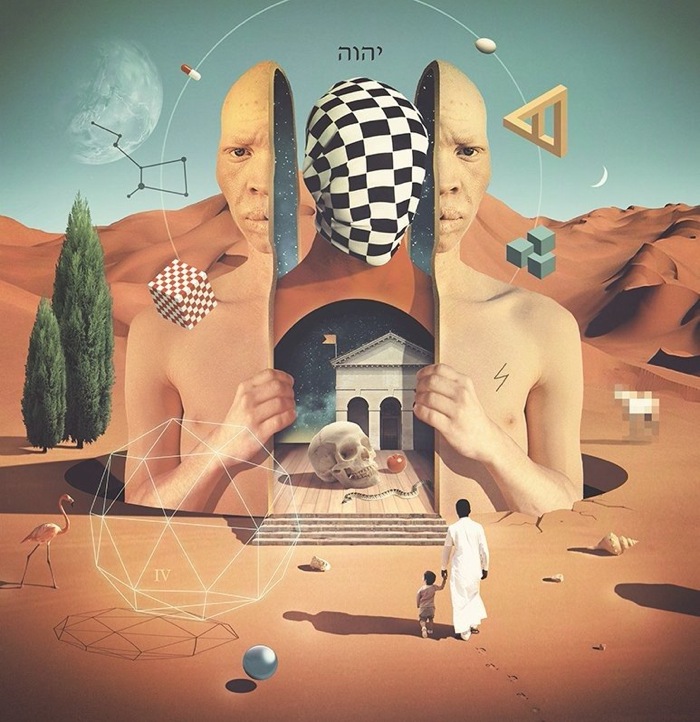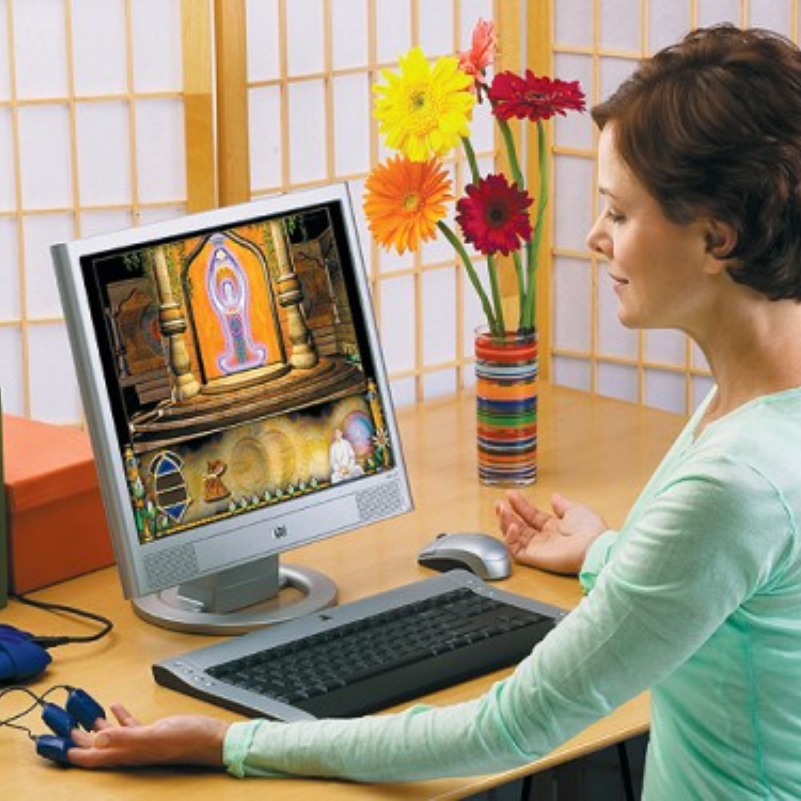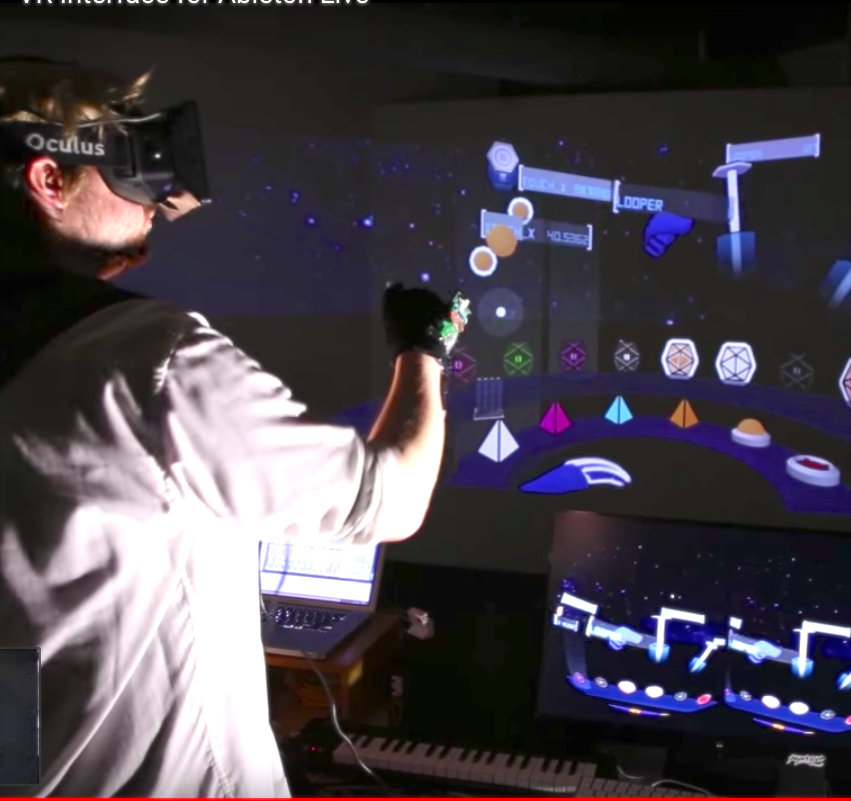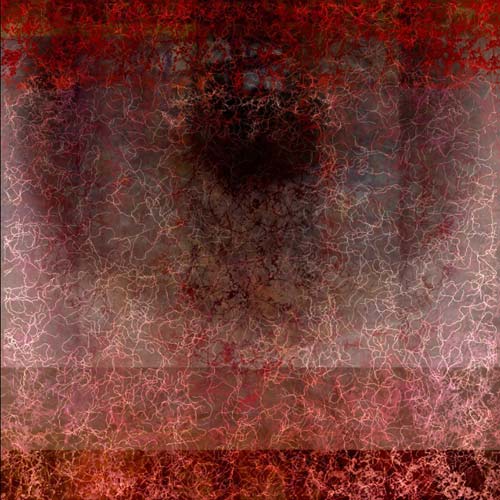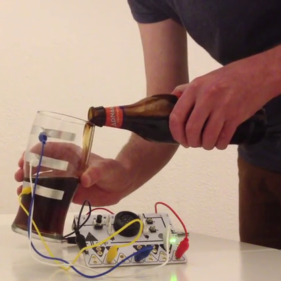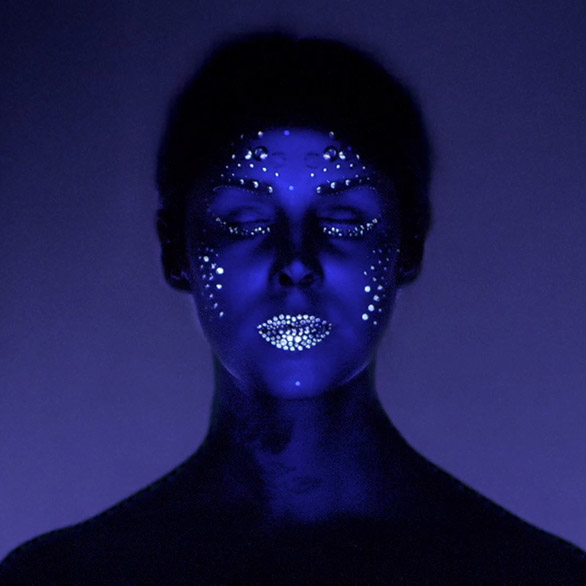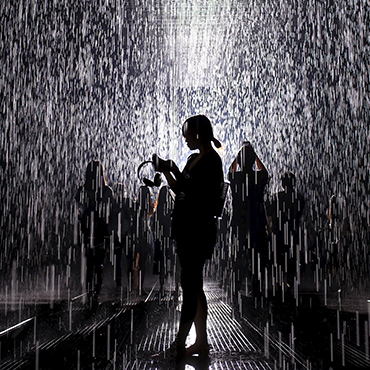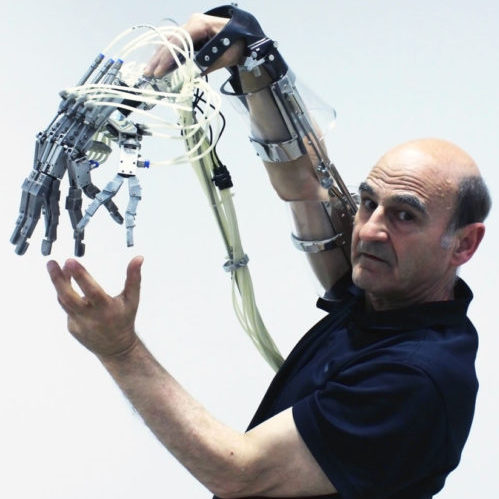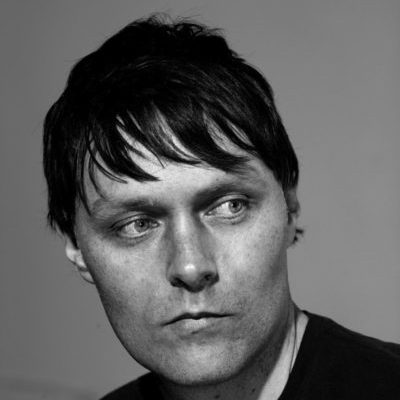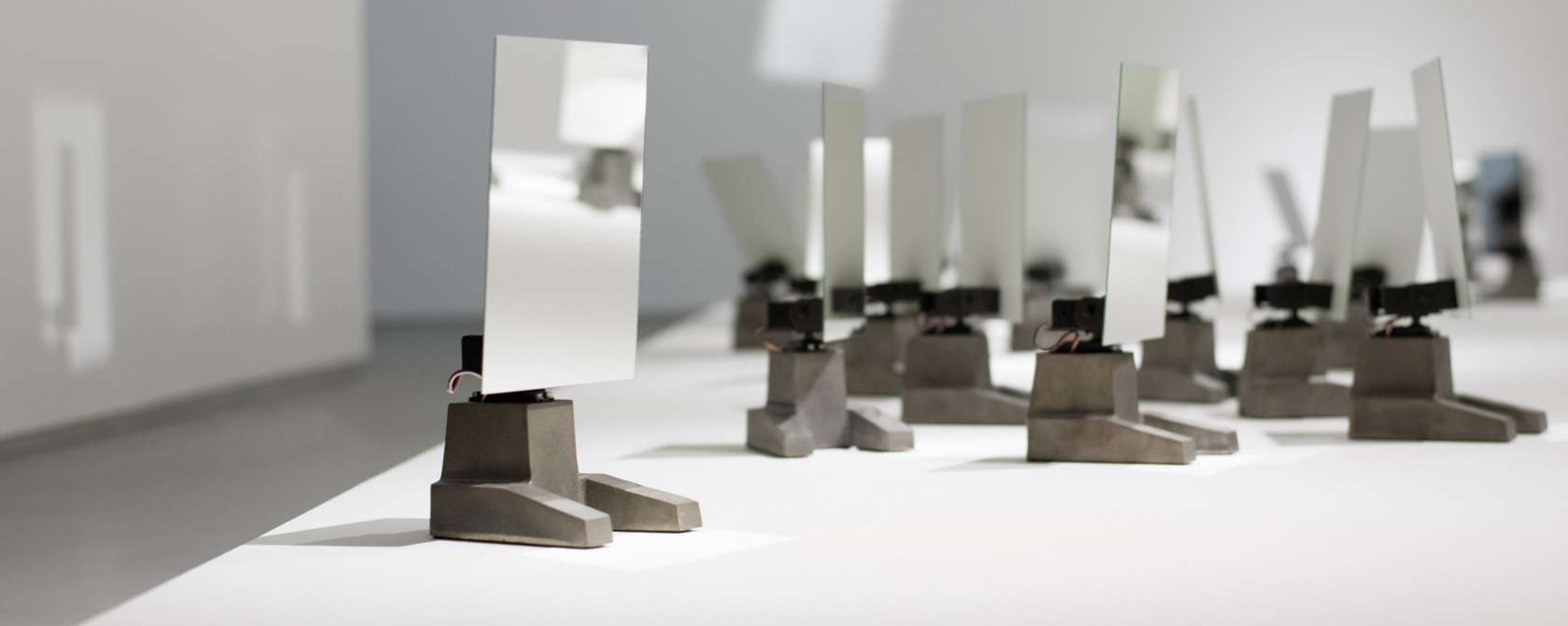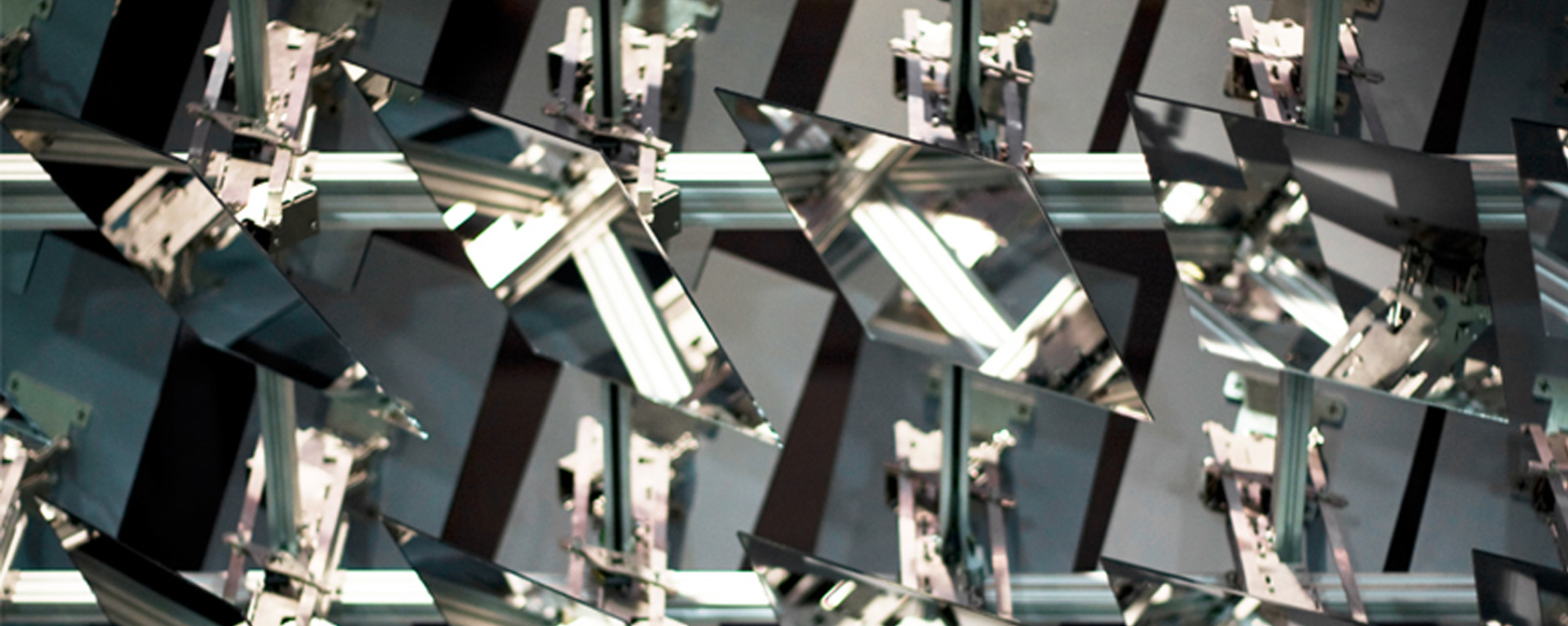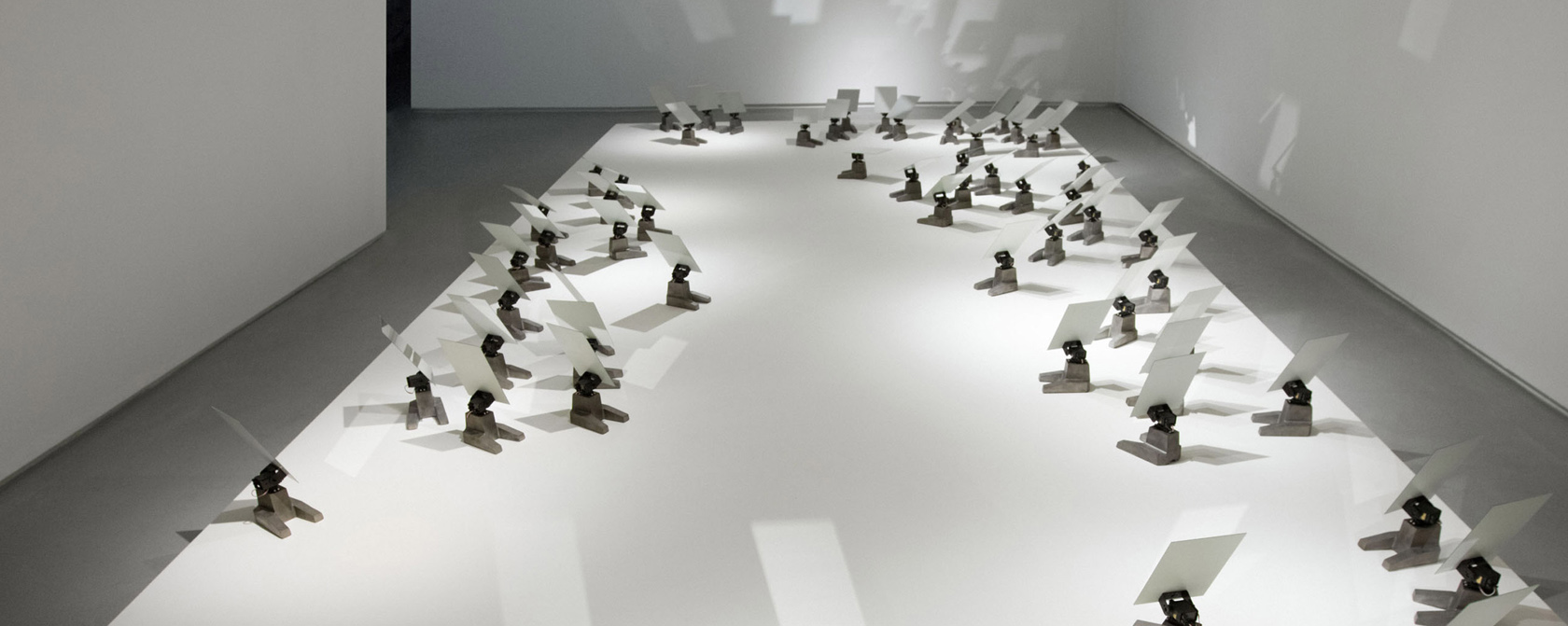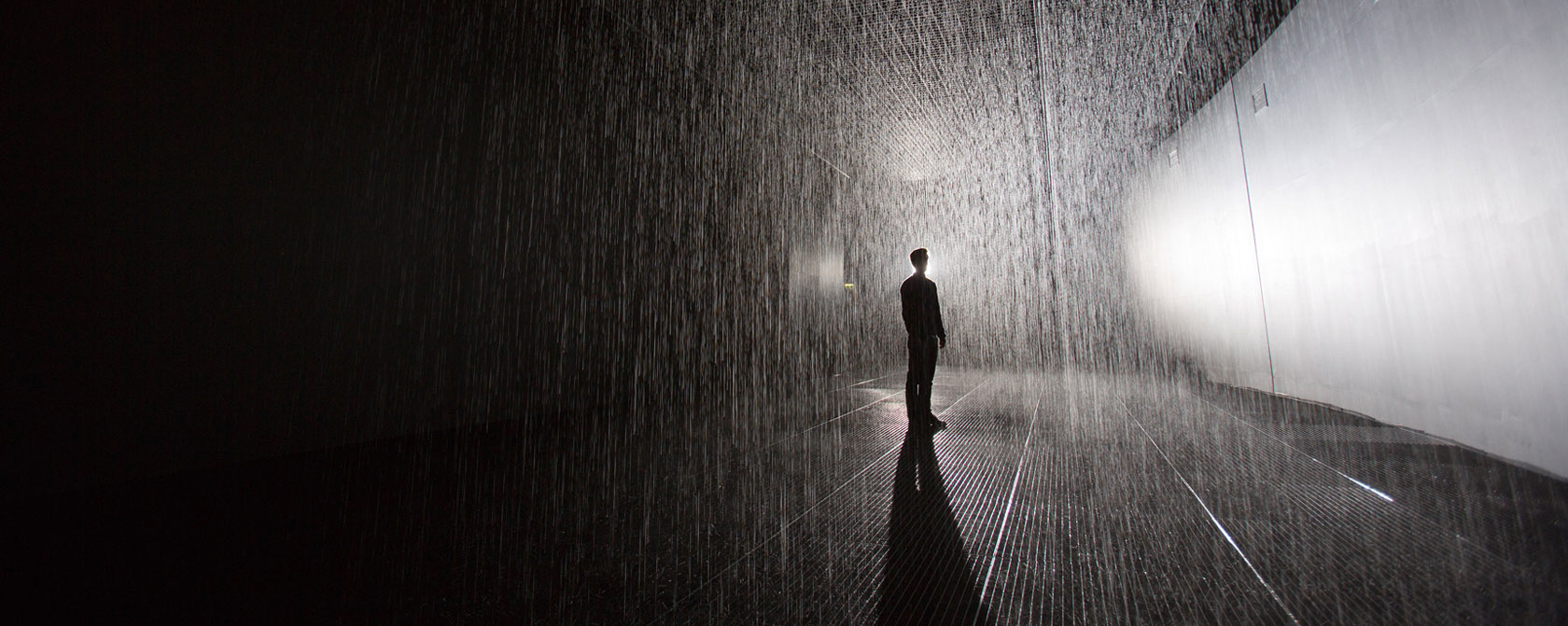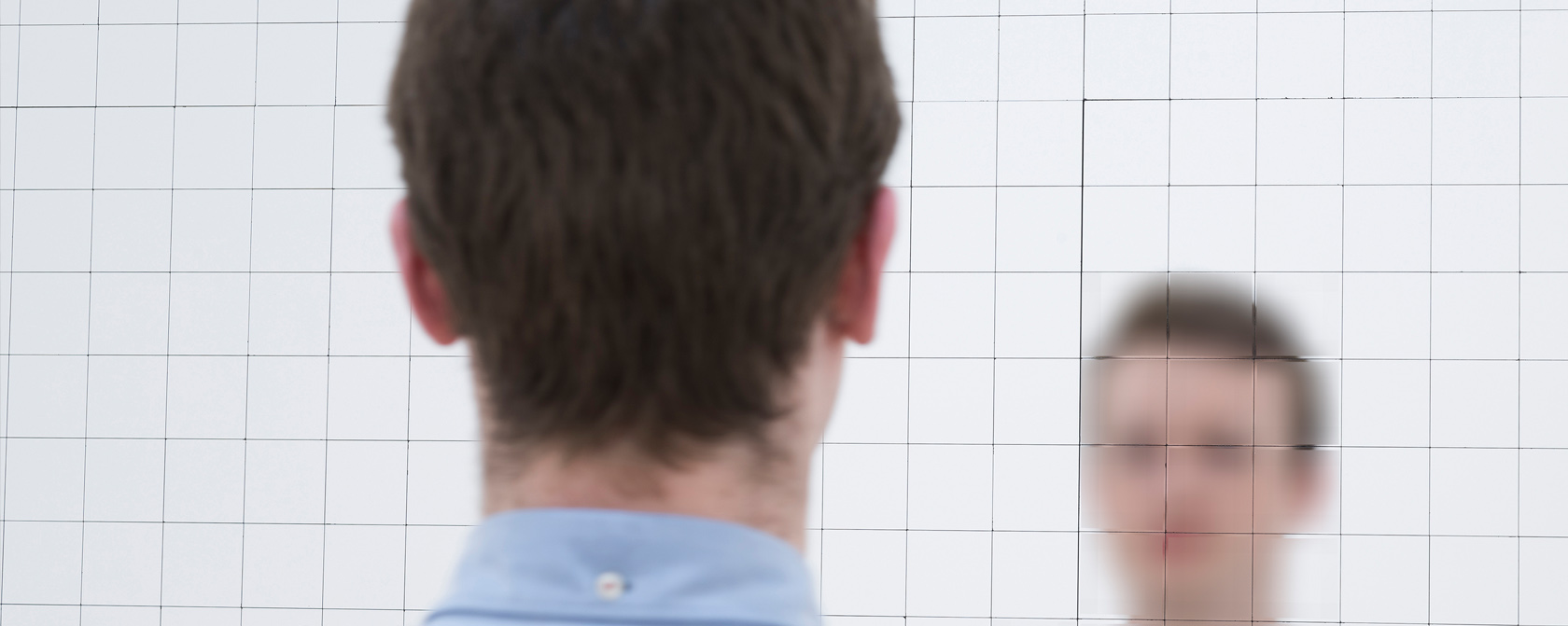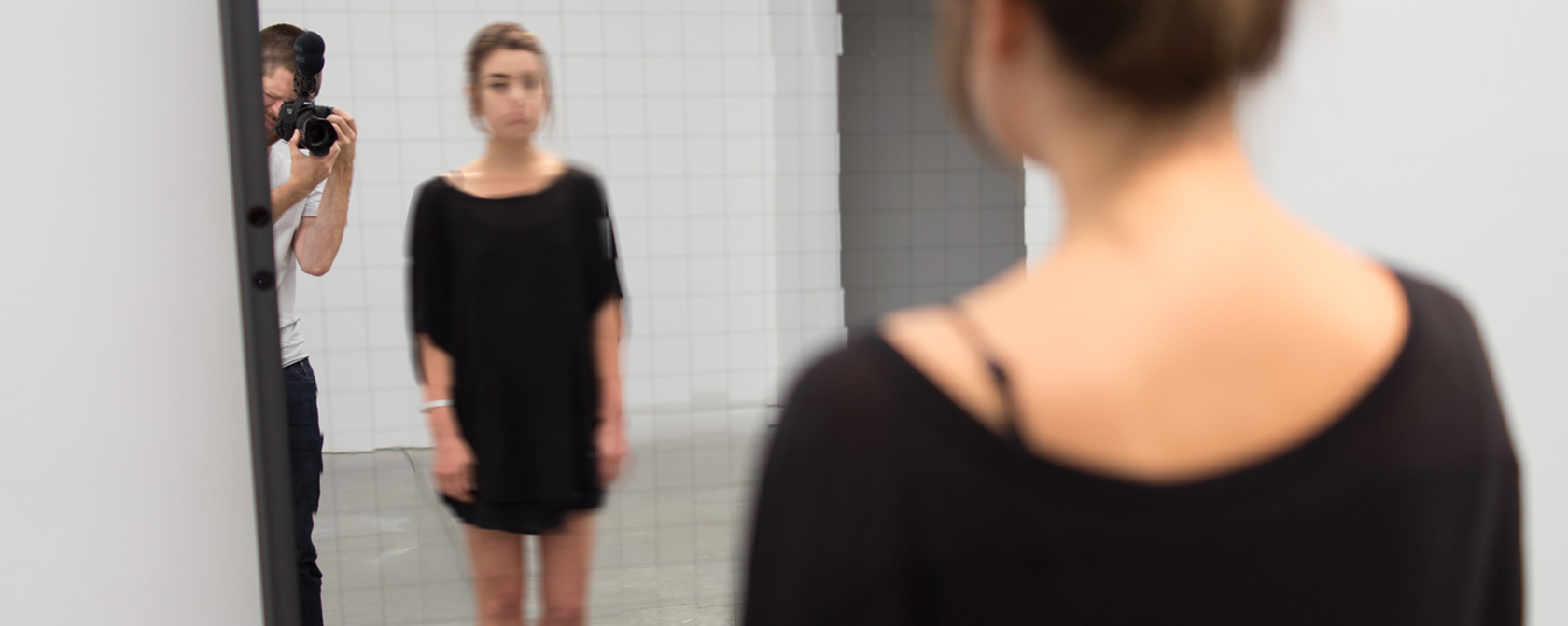Random International
By Joe McAlister
The collective group "Random International" was created in 2005 when founders Hanns Kock and Florian Ortkrass looked to create digital artwork that explored the themes of identity and autonomy in the post-digital age1. Their work has widely become critically acclaimed, with the group exhibiting in galleries across the world, including the Barbican in London and most recently the Pace Gallery in New York. Random international has become a powerhouse for interactive digital art and now has studios in both London and Germany.
They also use a vast range of materials in their work, for example "Motors, custom driver electronics, custom software, aluminium, carbon fibre, LEDs, custom rail system, computer"2 in their piece "Fifteen Points / I" (2016) and "mirror, custom mounts, motors, custom motion tracking software, camera, computer"3 in their piece "Blur Mirror" (2016). A large percentage of these materials consist of custom developed hardware and software designed to help overcome issues they may encounter and to futher realise their ideas, this is something they do very well. While the majority of their work may appear simple, it's important to remember that inside it is often a hugely complex piece, this is one of the most beautiful aspects of their work, how they can make it appear so effortless.
The group has without a doubt gone on to inspire a new generation of Digital artists including me, but unlike the typical aesthetics of the group's work the reason why is perhaps not so simple.
Audience, 2008
This piece is the first example of digital art I remember seeing in person, at the age of 11-12. It was displayed at the Victoria & Albert Museum in London during their "Decode" exhibition in 20094, likely becoming a massive precursor to my own interest in Digital art.
The piece has a very simple concept at the heart, which makes the execution and presentation of the piece even more important. Once the audience member steps amongst the mirrors the pieces suddenly spring into life and turn so they perfect surround the user, leaving thousands of reflections of the viewer shining back, perfectly coordinated. This is all done with no absolutely no interaction required in the user's part, other than stepping into the piece, it will just work making the user instantly aware of the idea behind the piece, stripped of the classic burdens other digital art can sometimes provide.
This is one of the many elements that makes RI's work so interesting, they have always sought to create work that requires minimal interaction from the audience however still relies purely on their input. This allows the piece to come across as very genuine as the audience member is an essential part of the piece but there's also little room for things to go wrong when it comes to interaction, no mistakes, no misunderstanding, nothing that can dampen the user's own experience. This brave step to remove so much interactivity is something that I strive for. In particular, after watching people interact with my own work you begin to realise that they will always find a way to misinterpret the instructions in a way that completely prevents the piece from working correctly and ruins the illusion behind it. This element is not something just found in "Audience" 2008.
Rain Room, 2012
Arguably one of their most famous pieces the "Rain Room" was shown at the Barbican Centre - London (2012/2013), Museum of Modern Art - New York (2013) and Yuz Museum - Shanghai (2015). The piece comprised of thousands of solenoid valves and motion sensors that work together to transform an entire room, making it one of the most truly interactive and immersive pieces I've seen. Camera's precisely track the user's movements and turn off valves directly above them allowing the user to walk amongst the rain without ever getting wet. Giving the user total freedom and almost godlike powers. Christopher Knight, an art critic from the Los Angeles Times wrote "Rain Room [...] simulates a heavy downpour, the messiness is all cleaned up smoothed out, unruffled and neatly organised for your 15 minutes of viewing pleasure. It's a Minimalist storm. "Rain Room" performs plastic surgery on nature.."5. That's exactly how it feels, it's truly like a minimalistic interpretation of real life, there's no "odd" feeling about it. I tend to find that when digital art tries to imitate real life, whether it's through interactivity, visualisation (VR etc) or animation it always has a strange feel to it, almost as if it was coated with a unnatural sheen. It feels strange and puts you on edge, perhaps comparable to the Uncanny Valley effect in 3D animations/modelling of faces6. By rather than adding or replicating real life they attempt to remove elements it no longer becomes a contest to compare the piece with your own experiences as they are no longer the same, it's free to be interpreted as the artist intends however still maintains that critical link to real life. It's why for "The Watsons" (2016) I decided against animating their mouths realistically, as by doing so it becomes directly comparable and ultimately too creepy. This piece was actually my inspiration for that decision. It's also seen with animation studios like Pixar which choose to animate their characters blinking with one eye a frame behind at all time8.
As with good interactive art one of the most fun parts of the piece is actually watching people's interaction and this is particularly prevalent with the Rain Room. The simple idea behind it would cause adults to become children, running around the piece giggling, eyes wide open with surprise. For me this is one of the best indicators of a piece, art shouldn't always be seen in such a serious sense. Sometimes laughing can more prominently show the vast and meaningful effect art can have on people's lives than blank staring and critical reception.
The Rain Rooms immersive and effortless interactive element is something I'm particularly taking inspiration from in my next piece.
Blur Mirror, 2016
This is one of the latest pieces from Random International. A mirror that in real time will take the view in front of it and display it, like a typical mirror however, the viewers face will be blurred in real time. Forming a large, partially distorted image.
This piece demo's another characteristic common with the collectives work. Understatement. They are not afraid of creating pieces that look deliberately understated, objects that just lie in the corner of a gallery, not really standing out but just being omnipresent, waiting for the user's interaction to burst into life. It's almost as if the understatement of the piece actually adds to the mystery. "What does it do?", "What even is it?" the mind is rife with questions and very little answers. Perhaps showing that keeping a few tricks deliberately from the user can only work for the piece and make it more interesting once it reveals it's secrets. When commenting about the piece, they say "Obscuring the onlookers own face within their reflection, Blur Mirror presents a picture of human fragility and impermanence striking a poignant chord in the age of the avatar, Google, and global extremes of data transparency and suppression."7.
My work and Random International
Other artwork and artists play a massive role in the work I create. Whether it may be a concept I find fascinating or a method of presenting that is particularly alluring. I also always strive to improve on my work, finding it's flaws and trying to better them in my next piece, you can see this with "You probably live in Horsham" 20159 and "The Watsons" 201610. In the first piece I explore the relationship between metadata and a person's personality, presented through a written form. Specifically a computer generated paragraph delivered through a UI via chrome. While this had quite a profound effect on the user I often found them falling short of relating to it and being truly moved by the content. That's why with "The Watsons" I decided to deliver information through speech from human-esk sculptures. This often relatible family setting removed the barrier provided by the text and made it instantly more accessible for people. Meaning they were now able to take all of the information in on a much more relaxed environment. Hopefully boosting the meaning behind the piece and hoping they would perhaps take better care of the level of information they put online.
For my latest piece I will again use my own reflection and feedback from "The Watsons" to improve my other piece, specifically the initial interaction. While the speech worked perfectly and made the piece vastly more accessible I felt the initial interaction (e.g. going to joe.ac and typing in your information) just added an extra level of work for the user, before they were able to enjoy the piece. That's why I'm turning to ideas from Random International to help with this. Their work is so refined it never requires any conscious interaction from the user, therefore removing the most common barrier in their work and making it enjoyable and so much more influential.
In addition to this, I'm also going to look at understatement. Refining my idea that one step further to create something that leaves the viewer questioning what the piece does, only to be surprised and excited to find out it's true meaning once they provide their interaction. This additional level of showmanship will hopefully bring my piece alive, sparking more interest and getting the core message behind the piece to more people in an entertaining way.
1 http://random-international.com/studio/
2 http://random-international.com/work/fifteen-points-i/
3 http://random-international.com/work/blur-mirror/
4 http://www.vam.ac.uk/content/videos/d/video-decode-digital-design-sensations/
5 http://www.latimes.com/entertainment/arts/la-et-cm-knight-rain-room-review-20151102-column.html
6 http://theconversation.com/uncanny-valley-why-we-find-human-like-robots-and-dolls-so-creepy-50268
7 http://random-international.com/work/blur-mirror/
8 https://www.youtube.com/watch?v=uoqvvZIJCvo
9 https://joemcalister.com/the-watsons/
10 https://joemcalister.com/you-probably-live-in-horsham/



